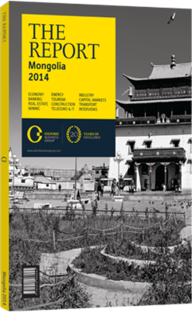OBG talks to Gungaagiin Jargalsaikhan, President & CEO, MIAT Mongolian Airlines

Interview: Gungaagiin Jargalsaikhan
How are policy developments influencing the airline sector moving forward?
GUNGAAGIIN JARGALSAIKHAN: Parliament has approved a policy to develop the civil aviation sector, which contains overall guidelines for the air transportation business in Mongolia until 2020. It will have a significant effect on the sector’s progress. One of the goals of the law is to double the number of international flight destinations from Ulaanbaatar, and, as the primary airline in Mongolia, MIAT has started to focus on expanding some new routes with cities such as Frankfurt and London by the summer of 2014. Moreover, local carrier Hunnu Air has recently started operating to Bangkok. The new airport will have a significant impact on the sector’s intentions to reach new destinations, and will help Ulaanbaatar become a regional transportation hub with more lanes and an increase in flight capacity. It will be a big step in Mongolia’s plans to connect with more international flights, helping bring Europe closer to the East.
What challenges lie ahead in developing Mongolia’s domestic market?
JARGALSAIKHAN: There are several carriers such as Eznis Airways, Aero Mongolia and Hunnu Air that handle the domestic traffic and take 70%-80% of the local market. Currently, it is estimated that 45%-50% of revenues in domestic flights come from the mining industry, so any negative change in mining will have a big impact on the airline sector. To reduce the vulnerability of a marketplace driven by a single economic force, diversifying revenues and relying more on other industries such as tourism will help this market’s growth.
Another challenge that is affecting the improvement of domestic traffic, as well as the expansion of international destinations, is the overall high cost of fuel in Mongolia. The cost of jet fuel in Ulaanbaatar is almost 50% more expensive than in Beijing and incurs greater operational costs. Fuel currently represents one-third of the industry’s total expenses, and, in such an environment, it is not easy to compete as a strong player.
All stakeholders facing this challenge need to make concerted efforts to reduce the price of fuel.
Will there be opportunities for investments within the sector in the medium-term?
JARGALSAIKHAN: The sector needs investments to expand its activities and, until 2020, these will largely come from government spending. From then on, there might be a need to liberalise the market. Companies operating in the airline sector, including MIAT, will need to look for alternative means of financing. One of these alternatives is to carry out the privatisation of MIAT, which should begin gradually in 2016, and will lead up to a full deregulation of the company and the sector by 2020. This would then open up the market to possible investors, both domestic and foreign. Although there is nothing wrong with taking this direction, before we do, we must first focus on revamping our company’s activities and making sure that operations are solid enough to undertake such significant change.
On a separate note, the air transport sector is likely to go through a period of consolidation in the medium- to long-term. As a result, there will be good opportunities for foreign companies to enter this market through mergers and acquisitions, which could help companies face the challenges ahead.
How would the sector benefit from more public-private partnerships (PPPs)?
JARGALSAIKHAN: The use of a PPP-based model to finance projects in the aviation sector has not been successful yet, mainly due to the fact that it is a fairly new concept for Mongolian businesses and the local market is relatively small. However, we have the needed regulations in place, and there are a few projects already in progress under the PPP financing scheme in sectors such as infrastructure development or energy. What we expect in the medium-term is that through the successful completion of PPP-financed pioneering projects, more will come to fruition in Mongolia’s airline sector.
You have reached the limit of premium articles you can view for free.
Choose from the options below to purchase print or digital editions of our Reports. You can also purchase a website subscription giving you unlimited access to all of our Reports online for 12 months.
If you have already purchased this Report or have a website subscription, please login to continue.

